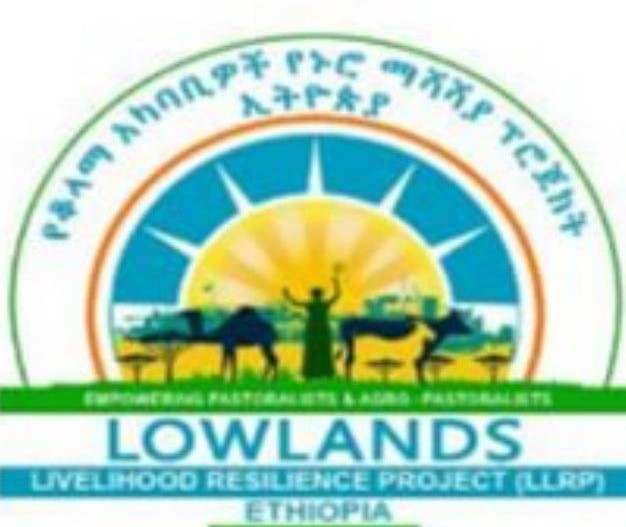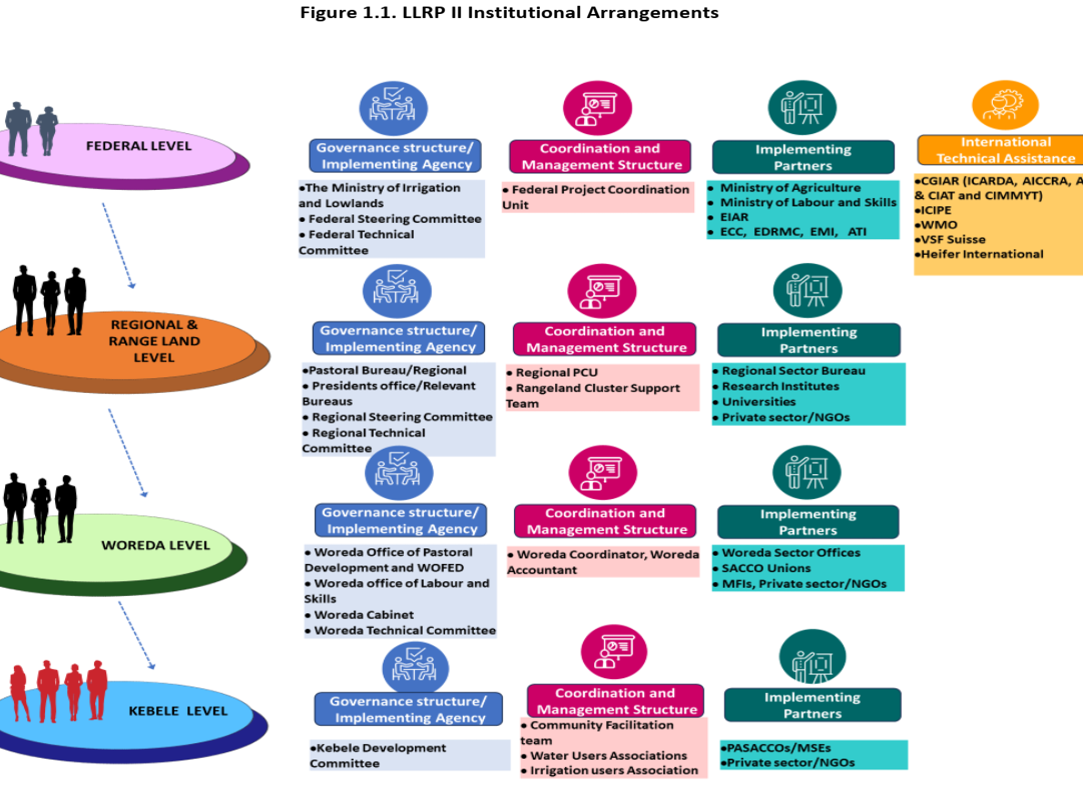The Lowlands Livelihood Resilience Project Phase II covers i.e Somali, Afar 8 regions Somali, Afar, Oromia, Benishangul Gumuz,Gambella,South Ethiopia, south west Ethiopia, and DireDewa regions.
The Project Development Objective is to Improve Livelihood Resilience of Pastoral and Agro-Pastoral Communities in Ethiopia. The key indicators towards this objective include:
- Farmers5 reached with agricultural assets or services (disaggregated by gender);
- Percentage increase in yield of selected crop and livestock commodities;
- Increased land area (in ha) under sustainable landscape management practices;
- Number of people with improved access to social services (disaggregated by service type and gender)



